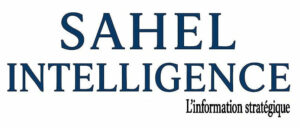A significant event occurred in Western Sahara, where Polisario militia members were seen holding a portrait of Ayatollah Mousavi Khomeini, the former Supreme Leader of Iran, on a military vehicle.
This symbolic scene is not merely an act of propaganda, but rather a reflection of the geopolitical alignment and geoterrorism strategy of Polisario and Algeria aimed at disrupting U.S. and French policies in Africa.
The strategic alliance with Iran, symbolized by the display of Ayatollah Khomeini’s portrait on a military vehicle, shows that the Polisario is receiving support from ideologically radical actors.
This highlights the terrorist nature of the Polisario, which positions itself in a violent and radical dynamic, in line with regimes that support violent groups on a global scale. These actions are primarily aimed at destabilizing the region.
The Polisario, based in Tindouf, Algeria, has been conducting violent attacks against Moroccan military and civilian positions for years.
The recent strikes in the El Guelta sector, in April 2025, are an example, according to Sahara Press Service (SPS) in Algiers.
According to observers, the Polisario has been increasing targeted attacks on command posts and military facilities, following a total war logic that makes no distinction between military and civilian targets, which is a common characteristic of terrorist actions.
In this anti-American context, Iran supports militant groups across the Middle East and North Africa, though the nature and extent of this support varies depending on specific circumstances.
For Western intelligence services, the presence of Iranian drones in Africa has drawn the attention of the international community.
Iran seeks to expand its influence in different parts of the world, including Africa, by providing various types of support to groups and governments that share its interests. Iran supplies drones and other weapons in certain parts of Africa.
Several Islamist terrorist groups operate in Africa, such as Boko Haram in West Africa, Al-Shabab in East Africa, and others.
Reports suggest that the drones used by these groups, with their range, endurance, payload capacity, and other technological factors, could either be of homemade design or supplied by foreign subsidiaries.

